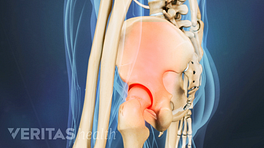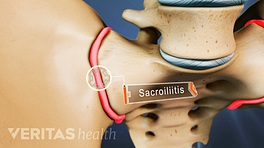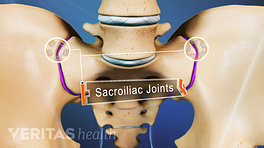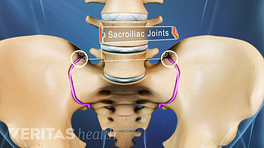The sacroiliac joints are located at the base of the spine. These joints connect the triangular-shaped sacrum to the hip on each side of the spine.
The sacroiliac joint is C-shaped and only 1 to 2 centimeters wide. It is lined by a thin layer of tissue that produces synovial fluid, which lubricates the joint and allows for smooth movement between the joint surfaces. An extensive architecture of tough and resilient ligaments helps stabilize and support the sacroiliac joint from the front and back of the pelvis.
These weight-bearing joints are strong and stable, as they provide support for the entire upper body. They help absorb and distribute forces directed between the spine and the legs.
The joints can become painful due to chronic trauma or an acute injury. Sacroiliac joint pain is similar to sciatica and is typically felt in the lower back, buttock, and thigh, along with a feeling of weakness and instability during certain movements or activities. Due to the complex anatomy and diverse functions of the sacroiliac joints, the symptoms can vary depending on the type of dysfunction. The most common causes of sacroiliac joint pain include inflammation of the joint, called sacroiliitis, or an abnormal motion of the joint, such as excessive movement or too little movement in the joint.
In This Article:
- Sacroiliac Joint Anatomy
- Sacroiliac Joint Ligaments and Muscles
- Sacroiliac (SI) Joint Anatomy Video










